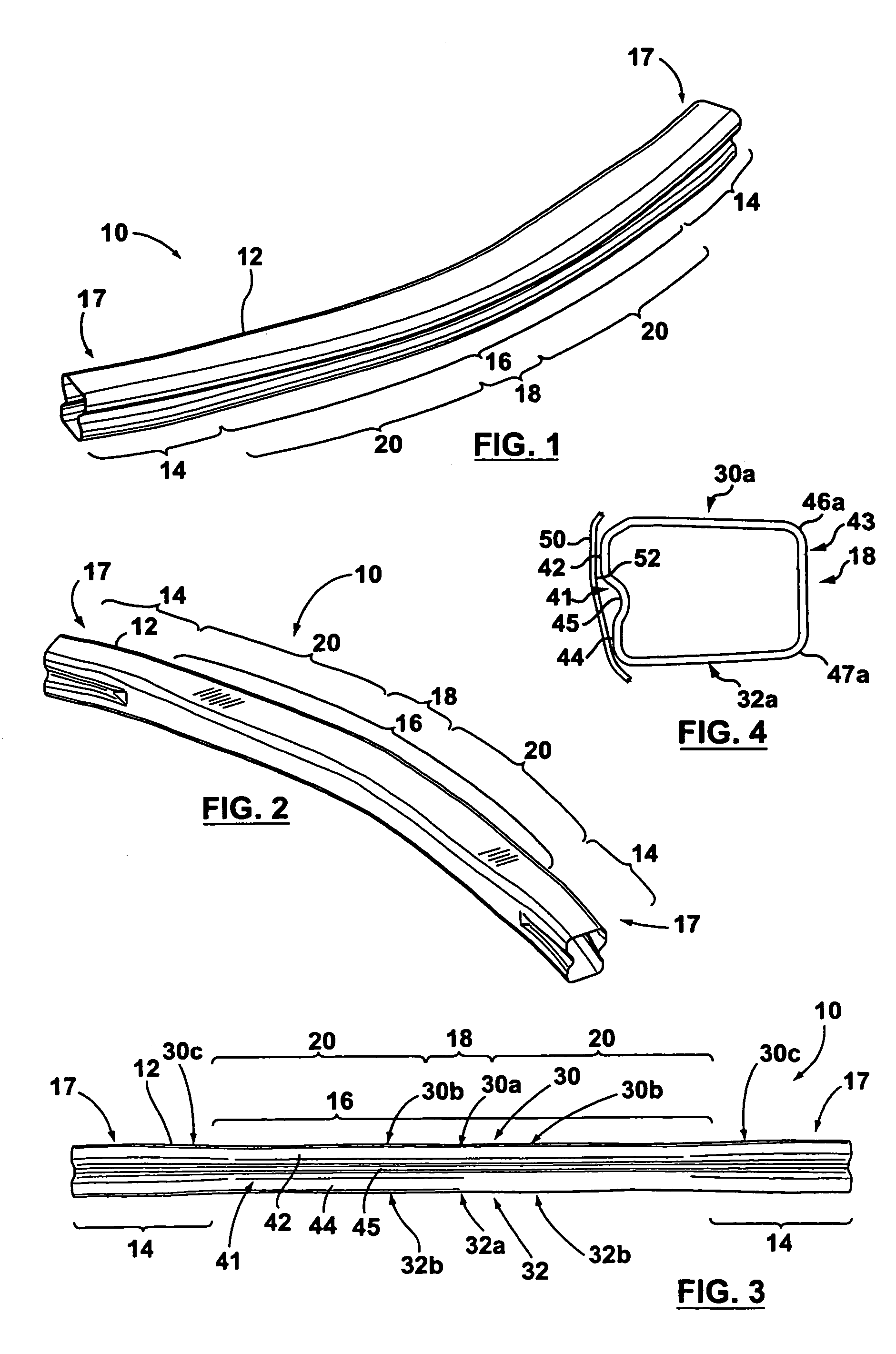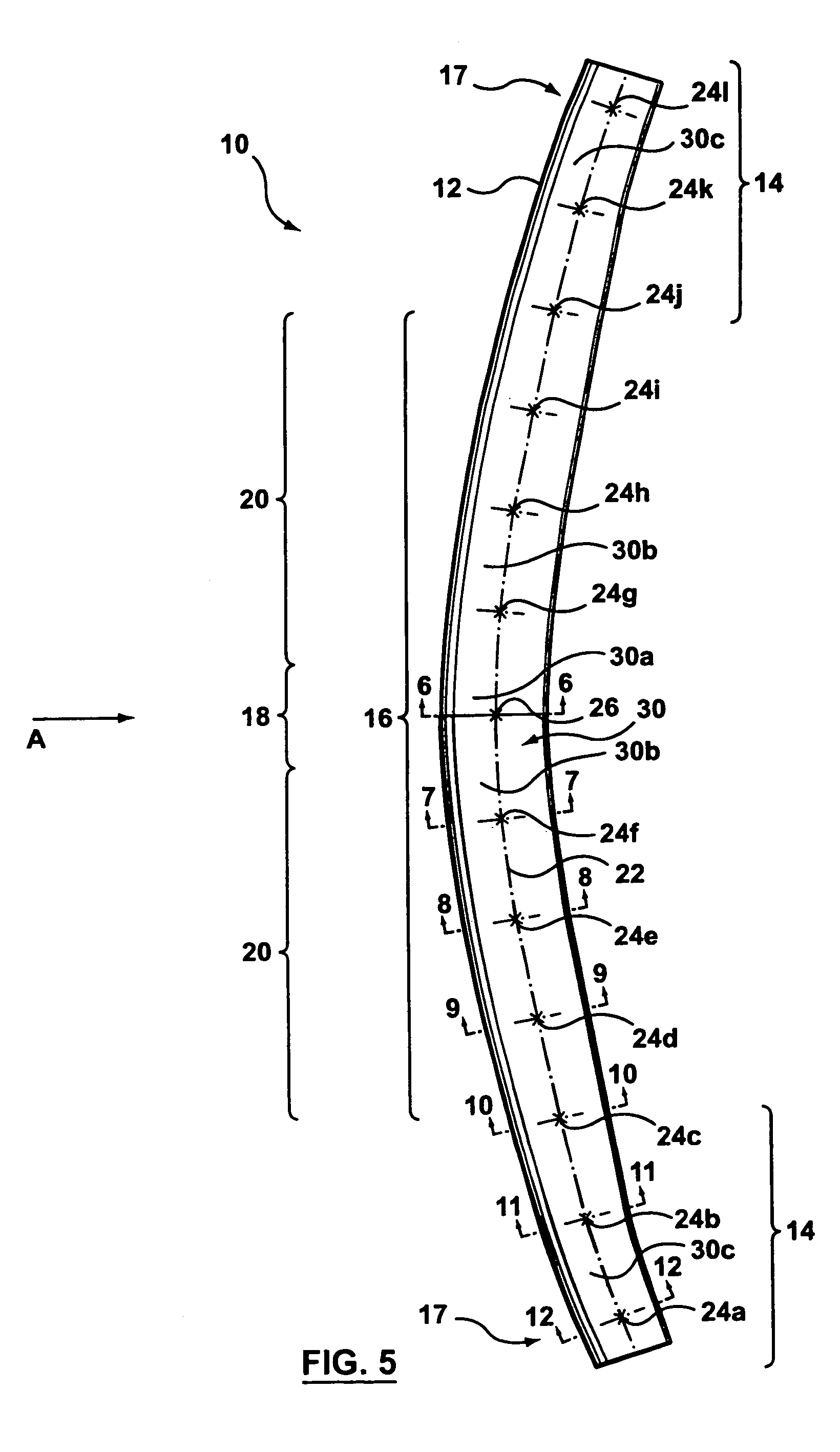Vehicle bumper beam having non-uniform cross sections
a bumper beam and cross section technology, applied in the direction of bumpers, vehicle components, vehicular safety arrangements, etc., can solve the problems of imposing limits on the dimensions of bumpers, damage to other parts of the vehicle, and more complex calculations, etc., to achieve high strength
- Summary
- Abstract
- Description
- Claims
- Application Information
AI Technical Summary
Problems solved by technology
Method used
Image
Examples
Embodiment Construction
[0031]Referring to FIGS. 1 to 4, illustrated therein is a bumper 10 according to a preferred embodiment of the present invention. The bumper 10 comprises a hollow, longitudinally curved tubular beam 12 having two side rail mounting portions indicated generally at 14, and a front impact portion indicated generally at 16. The front impact portion 16 is disposed between the side rail mounting portions 14 and formed continuously therewith. When installed in a vehicle, the bumper 10 will be disposed behind and covered by a fascia 50 (as shown in FIG. 4). Preferably, the side rail mounting portions 14 are disposed at the ends 17 of the tubular beam 12.
[0032]The front impact portion 16 comprises an initial impact region 18 and two additional deforming regions 20. The initial impact region 18 is centrally disposed between the additional deforming regions 20, and will be the first part of the bumper to contact the barrier in the event of a front impact, although it will do so indirectly, as ...
PUM
 Login to View More
Login to View More Abstract
Description
Claims
Application Information
 Login to View More
Login to View More - R&D
- Intellectual Property
- Life Sciences
- Materials
- Tech Scout
- Unparalleled Data Quality
- Higher Quality Content
- 60% Fewer Hallucinations
Browse by: Latest US Patents, China's latest patents, Technical Efficacy Thesaurus, Application Domain, Technology Topic, Popular Technical Reports.
© 2025 PatSnap. All rights reserved.Legal|Privacy policy|Modern Slavery Act Transparency Statement|Sitemap|About US| Contact US: help@patsnap.com



